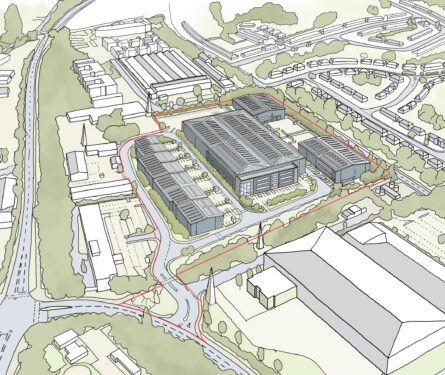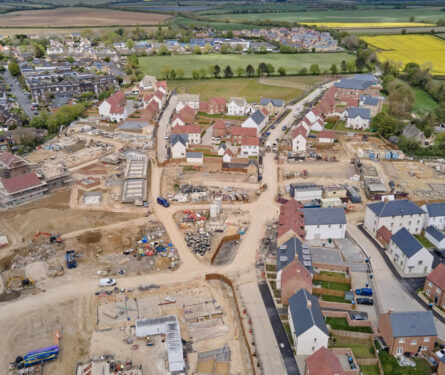The first Labour government in 14 years is determined to make its mark and they have begun their tenure by stating that planning reform will be key to delivering their economic growth objectives. With bold promises to deal with a chronic housing shortfall, the newly published NPPF consultation is the government’s solution to the current crisis. It also positively supports economic growth in key sectors and provides a boost for clean energy and the environment, particularly through support for onshore wind and renewables. This note provides a summary of the main changes to the NPPF that have been published for consultation until 24 September 2024, together with some commentary.
Housing
As expected, the reference to the housing target being ‘an advisory starting point’ has been removed, requiring local planning authorities (LPAs) to plan for their identified housing need. The requirement for LPAs to demonstrate a minimum of five years rolling supply of deliverable housing sites is to be restored alongside the 5% buffer to ensure choice and competition in the market. The requirement for a 20% buffer where there has been significant under delivery of housing over the previous three years (less than 85%) has been retained. The previous requirement for a 35% “urban uplift” for the 20 largest urban areas has been abandoned.
Most significantly, there is a revised standard method for calculating housing need, resulting in an annual housing target of just over 370,000 new homes a year (an increase of over 20%) which is designed to boost need in those areas where housing is least affordable. This means that the vast majority of LPAs (circa 90%) are going to see an increase in their local housing requirements, and over two thirds of authorities will see their requirements increase by over 200 homes a year.
The presumption in favour of sustainable development has been tweaked to allow the ‘tilted balance’ to be engaged if ‘policies for the supply of land’ (rather than the “most important” policies) are ‘out-of-date’, which is helpful in terms of providing greater clarity. Policies are considered out-of-date where a five-year supply (with the appropriate buffer) cannot be demonstrated, or where less than 75% of the annual requirement has been delivered over the previous three years. But, by specifically highlighting the location and design of development and the provision of affordable homes as part of the planning balance, have LPAs been given a greater opportunity not to apply the presumption in favour?
Green Belt
The requirement for LPAs to review Green Belt boundaries if they cannot meet their identified housing need has been restored. This need must be met ‘in full’, unless there is clear evidence that such alterations would fundamentally undermine the function of the Green Belt across the area of the plan ‘as a whole’. This appears to be a high bar and represents a clear signal from government that LPAs should plan accordingly when preparing local plans.
Exceptional circumstances are still required to be demonstrated, but the proposed changes helpfully clarify that an authority’s inability to meet its identified need for housing, commercial or other development through other means is included within such circumstances. This, combined with the revised standard method for calculating local housing need, will certainly see more Green Belt land coming forward for housing development.
When releasing land from the Green Belt, consideration should first be given to previously developed land in sustainable locations and then ‘Grey Belt’ land (see below) in sustainable locations before other sustainable Green Belt locations.
Land released from the Green Belt will be required to provide 50% affordable homes (subject to viability) including a proportion of social rent, necessary improvements to local or national infrastructure and the provision of new (or improvements to existing) green spaces that are accessible to the public.
Green Belt land released for commercial and other development will need to provide the necessary improvements to local and national infrastructure and new, or improvements to existing, green spaces that are accessible to the public.
In respect of the delivery of 50% affordable housing, viability is likely to be a crucial issue. Annex 4 of the document certainly raises some questions. The update is seeking to formalise a process to establish a benchmark land value for Green Belt sites which includes a “reasonable and proportionate premium”, which of course is different to “the minimum return at which a reasonable landowner would be willing to sell their land” defined by the current PPG. The proposed BLV is currently left blank, but this has the potential to set a value for Green Belt land which is below that of other land, which could inadvertently create a two tier land market and impact upon housing delivery. The draft text also introduces late stage reviews for schemes which cannot deliver 50% affordable housing, which can make obtaining funding to deliver projects more challenging.
Grey Belt
The much talked about ‘Grey Belt’ has been defined as ‘land in the green belt comprising previously developed land and any other parcels and/or areas of Green Belt land that make a limited contribution to the five Green Belt purposes (but excluding those areas or assets with particular importance).’
Arguably the most significant proposed change to green belt policy, however, is that development on Grey Belt land that can deliver affordable housing, green spaces and necessary improvements to infrastructure should NOT be regarded as ‘inappropriate development’ where local planning authorities cannot demonstrate a five-year supply of deliverable housing sites or where the delivery of housing is below 75% of the housing requirement over the previous three years. This removes the need for ‘very special circumstances’ to be demonstrated and will therefore allow for more speculative development opportunities in the Green Belt.
Transitional arrangements
The new NPPF will be material when determining planning applications from the date of its publication. For plan-making, however, plans that are at Regulation 19 stage or beyond within one month of the NPPF being published (the government has separately stated that they hope this will be in late 2024) may not be required to accord with the proposed changes and may be examined against the December 2023 version of the NPPF. The decision hinges on whether the plan’s annual housing requirement is more than 200 dwellings less than the published relevant local housing need figure, as set out by the standard method.
Renewable and low carbon energy
Very positively, the proposed amendments state that LPAs should support planning applications for all forms of renewable and low carbon development and give significant weight to the proposal’s contribution to renewable energy generation and a net zero future.
To help increase the use and supply of renewable and low carbon energy and heat, the proposed NPPF also states that LPAs must now identify suitable areas for renewable and low carbon energy sources and supporting infrastructure in plans, where currently they only need to ‘consider’ identifying such sites. Allocating sites will greatly assist in securing approval for renewable / low carbon projects.
Through parallel consultation on other proposed changes to the planning system, the government is also seeking to re-integrate onshore wind into the Nationally Significant Infrastructure Projects (NSIP) regime. It is proposing to set the threshold at which onshore wind projects are determined as nationally significant at 100 megawatts (MW) and to increase the same threshold for solar projects to 150 MW (up from 50 MW). The overall aim of these changes is for projects to follow a proportionate and efficient process to securing consent.
A limited return of strategic planning
Whilst the proposed changes to the NPPF maintain the existing duty to cooperate requirement amongst neighbouring authorities, the wording has been further strengthened. Notably, paragraph 27 outlines that policy-making authorities should make sure that their plan policies are consistent with those of other bodies. The ministerial statement published with the NPPF makes clear that the direction of travel is to return to strategic planning, stating that planning for growth needs to go beyond the local level and that it will be necessary to introduce effective new mechanisms for cross-boundary strategic planning to enable universal coverage which will be formalised in new legislation.
Commercial
Building on the existing wording, the proposed changes to the NPPF specify the need for planning policies to make provision for appropriate sites to support commercial development which meet the needs of a modern economy, including suitable locations for uses such as data centres, digital infrastructure, gigafactories, laboratories, freight and logistics, all of which are seen as critical to economic growth.
The proposed NPPF also highlights the need for planning policies and decisions to make provision for new, expanded or upgraded facilities and infrastructure that are needed to support the growth of data-driven, creative and high technology industries (including data centres and grid connections). With regard to storage and distribution operations, the proposed NPPF highlights that policies and decisions must allow for the efficient and reliable handling of goods, especially where this is needed to support the supply chain, transport innovation and decarbonisation. The expansion or modernisation of other industries of local, regional or national importance to support economic growth and resilience must also be recognised in policy and decisions.
In assessing sites that may be allocated for development in plans, or specific applications for development, it is proposed that a vision led approach to promoting sustainable transport modes will be required.
With regard to public service infrastructure (i.e. further education colleges, hospitals, criminal justice accommodation), the proposed NPPF states that significant weight should be placed on the importance of new, expanded or upgraded public service infrastructure when considering proposals for development.
The disappearance of “beautiful”
Finally, the controversial references to “beautiful” buildings and places introduced by Michael Gove are largely proposed to be removed from the NPPF, albeit paragraph 128 still refers to the ‘creation of high quality, beautiful and sustainable buildings’ so it hasn’t disappeared entirely – for now!!
Next steps
The proposed changes to the NPPF are the first stage of the much promised planning reforms that the new government announced in the King’s Speech. The government will respond to consultation comments and prepare a revised NPPF before the end of the year. These changes will be followed by further reforms to be set out in the Planning and Infrastructure Bill, as well as a commitment to introduce a universal system of strategic planning across England.
The introduction of mandatory housing requirements, the revised standard method and the proposed changes to Green Belt policy all represent significant changes in national policy. They will undoubtedly have ramifications for all local authorities preparing local plans, but they will also start to affect decision-making towards the end of the year. It is considered that the proposed NPPF text also provides vital support for commercial economic growth and clean energy, which will also start to impact positively in 2025.
tor&co has a large team of planning and environmental planning consultants working on both small and large projects in all sectors across the UK. If you would like to discuss how these proposed changes could affect your proposals, please contact us for a no-obligation discussion.














